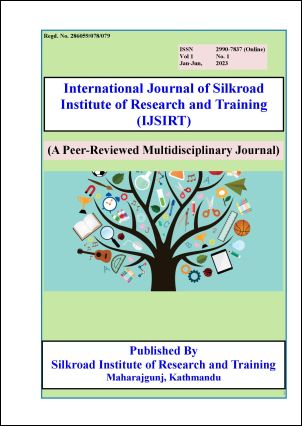Complementary Feeding Practice and Nutritional Status of Children Between 6-23 Months Attending Pediatric OPD of Bharatpur Hospital Chitwan
DOI:
https://doi.org/10.3126/ijsirt.v1i1.55925Keywords:
Complementary Feeding, Nutritional status, infantAbstract
Background: Malnutrition is responsible directly or indirectly for over half of all childhood deaths. Infants and young children are higher risk of malnutrition from six months of age onwards. The aim of the present study was to assess the complementary feeding practice and nutritional status of children between 6-23 months attending pediatric OPD of Bharatpur Hospital, Chitwan, Nepal.
Methods: A cross sectional, study was conducted among 333 mothers and their children aged 6-23 months from July to November 2022. The data was collected through semi-structured interview schedule from mothers along with infant anthropometric measurement. The data was analyzed in SPSS 26 version.
Results: Overall prevalence of malnutrition was 46%. Among them the prevalence of wasting, stunting and under-weight were 35.29%, 32.67% and 32.02%, respectively. There were significant association between the education qualification, occupation of mother, type of delivery, number of children, timely introduction of complementary feeding, egg consumption, and on demand breastfeeding with wasting.
Conclusions: Quiet practice of complementary feeding and noticeable prevalence of malnutrition were found among children 6-23 months of age children. These outcomes focus the need to increase the complementary feeding practices ultimately improve the nutritional status of children.
Downloads
Downloads
Published
How to Cite
Issue
Section
License
Copyright (c) 2023 Asha Thapa, Devi Kumari Sapkota, Sumitra Parajuli, Bijaya Dhakal, Rama Kumari Lamichhane, Ashmita Sharma

This work is licensed under a Creative Commons Attribution-ShareAlike 4.0 International License.
CC BY-SA: This license allows reusers to distribute, remix, adapt, and build upon the material in any medium or format, so long as attribution is given to the creator. The license allows for commercial use. If you remix, adapt, or build upon the material, you must license the modified material under identical terms.




